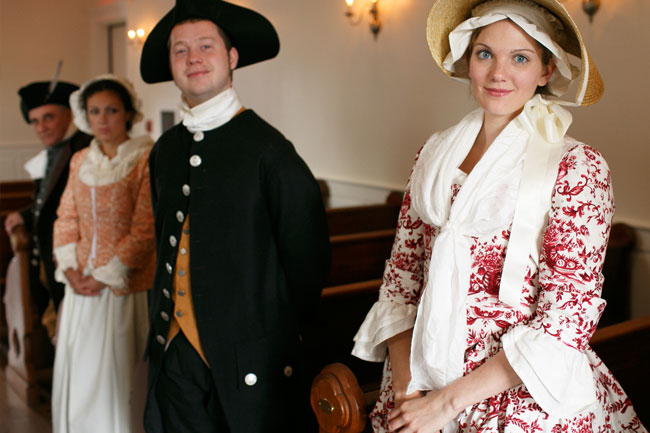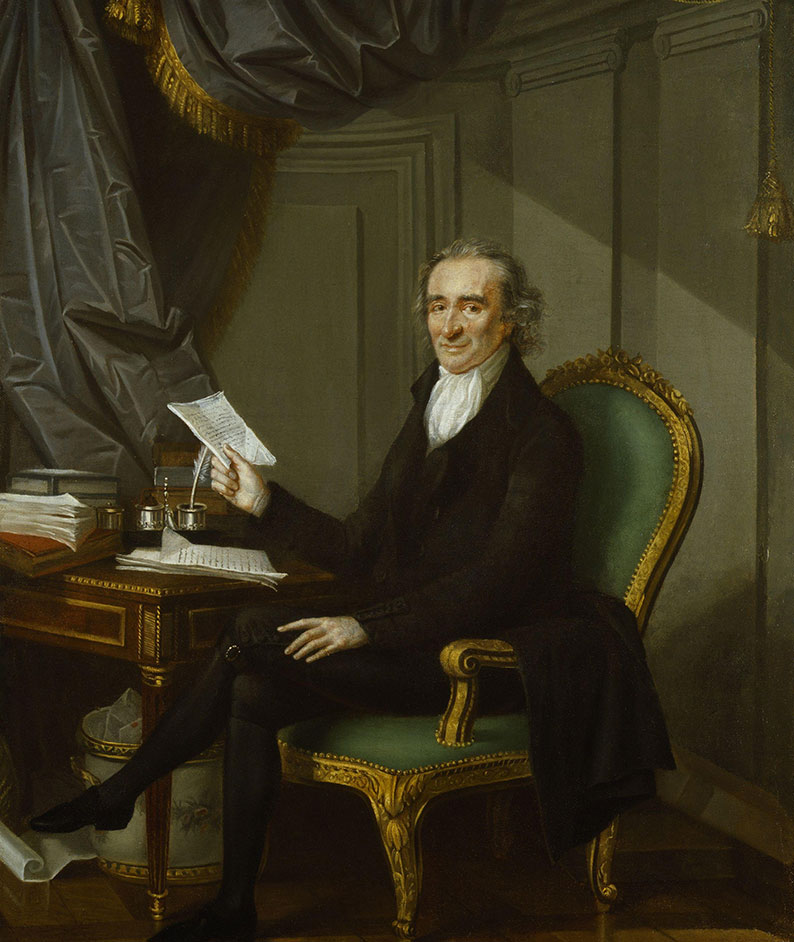Clothing and Style of the 1770s
The clothing and style of the 1770s is worlds away from that of today. Men’s clothing during the American Revolution was extremely form fitted and individually tailored to fit the wearer’s body. A suite of clothing which consisted of a coat, waistcoat, and breeches was often a “ditto suit.” A “ditto suit” was when all of the pieces of the suite were made of the same color and fabric. It was also common for just coats and breeches to match, and for coats, waistcoats, and breeches to be worn which were made from completely different materials and colors.
Hunting Shirts During the American Revolution
The ubiquitous hunting shirt worn by American forces during the American Revolution was an unknown garment to New Englanders prior to the arrival of William Thompson, Daniel Morgan, and Michael Cresap’s famed frontier riflemen (from Pennsylvania, Virginia, and Maryland respectively) at Cambridge Camp in July and August of 1775 during the Siege of Boston. The linen hunting shirt was a backcountry garment which came about on the American frontier in the years prior to the American Revolution. The garment was synonymous with the American frontier. By August of 1775, the army George Washington commanded at Cambridge Camp was destitute, lacked proper clothing, and was in no way uniformed in a traditional military sense. In an effort to cheaply and effectively clothe his troops Washington attempted to outfit the newly formed Continental Army with hunting shirts, but the hunting shirt was not adopted as a uniform of the Continental Army until 1776. The Cambridge Camp General Orders dated August 7, 1775 stated: “…the General has hopes of prevailing with the Continental Congress to give each man a hunting shirt…” Washington would later write in a General Order dated July 24, 1776, “No dress can be cheaper, nor more convenient, as the wearer may be cool in the warm weather and warm in cool weather by putting on under-cloathes which will not change the outward dress, Winter or Summer – besides which it is a dress justly supposed to carry no small terror to the enemy, who think every such person (so dressed) is a complete marksman.” Hunting shirts were not worn by the New England Patriots who fought at Lexington and Concord, Bunker Hill, and the Siege of Boston. The hunting shirt was not adopted as a uniform for New England regiments serving in the Continental Army until mid-1776.














